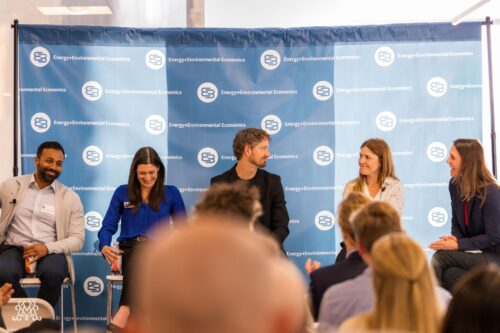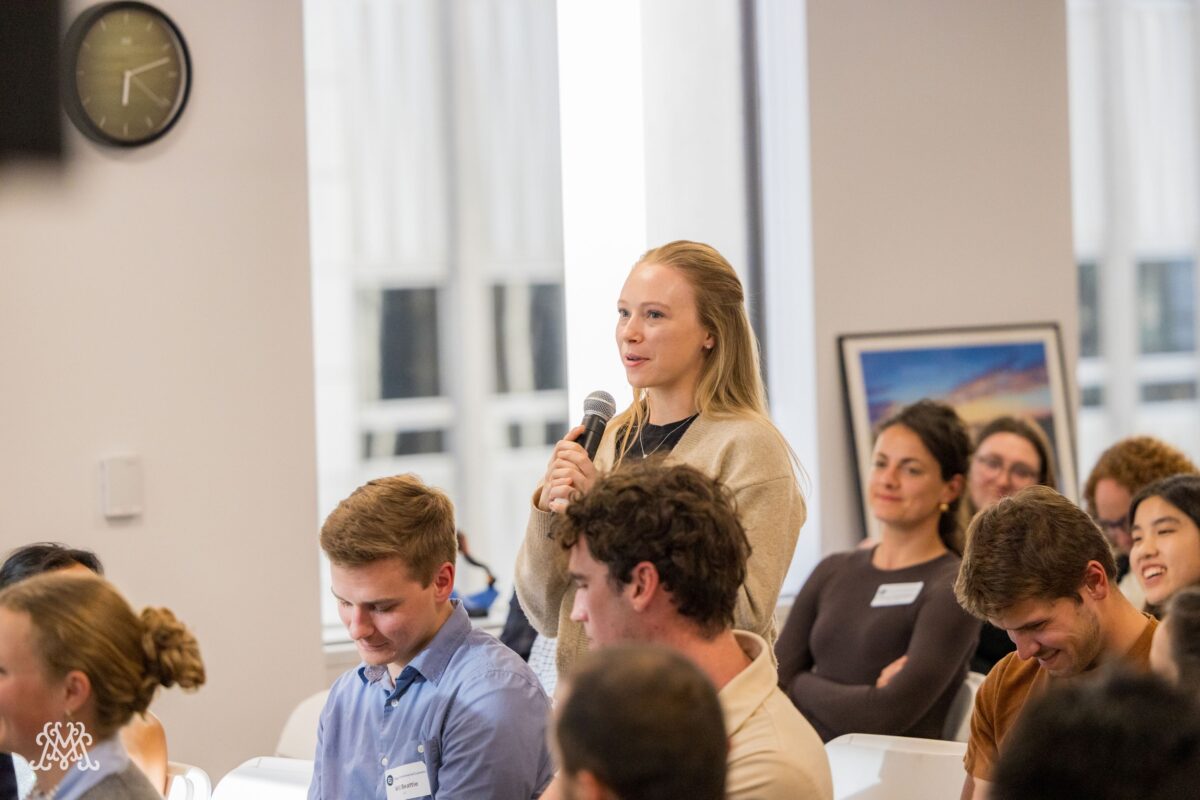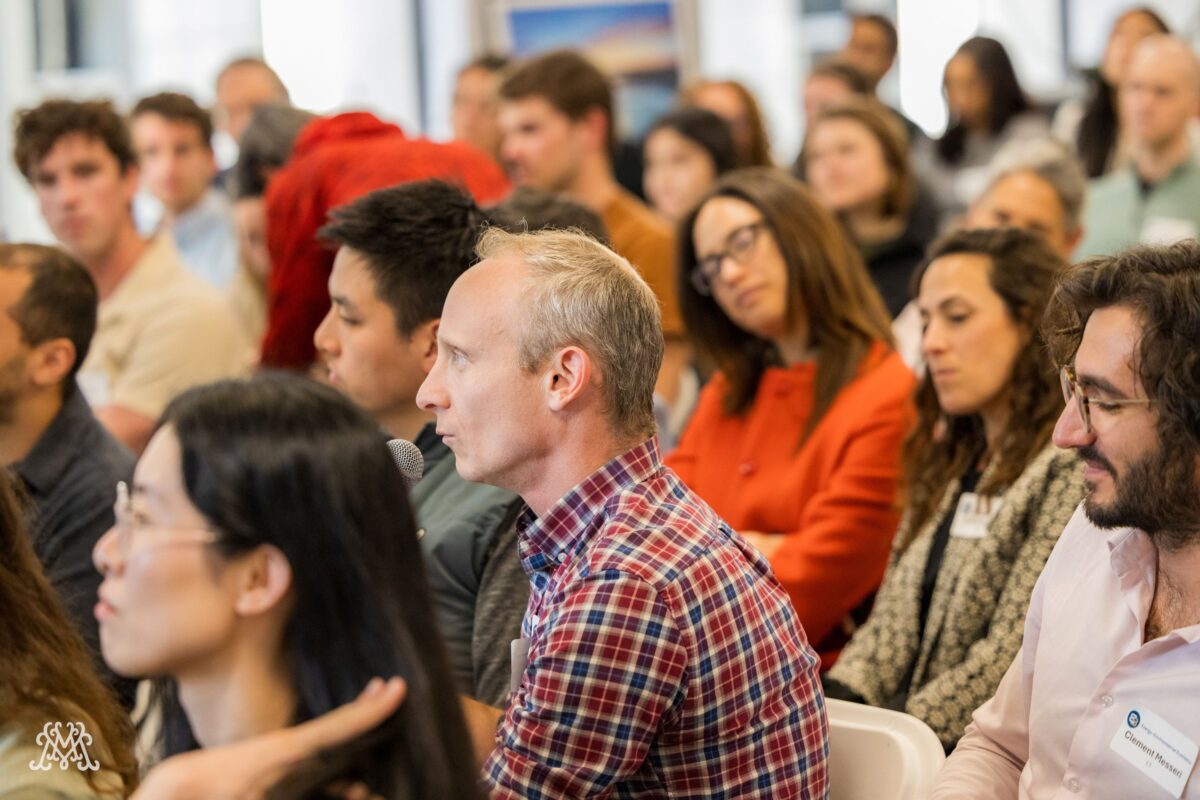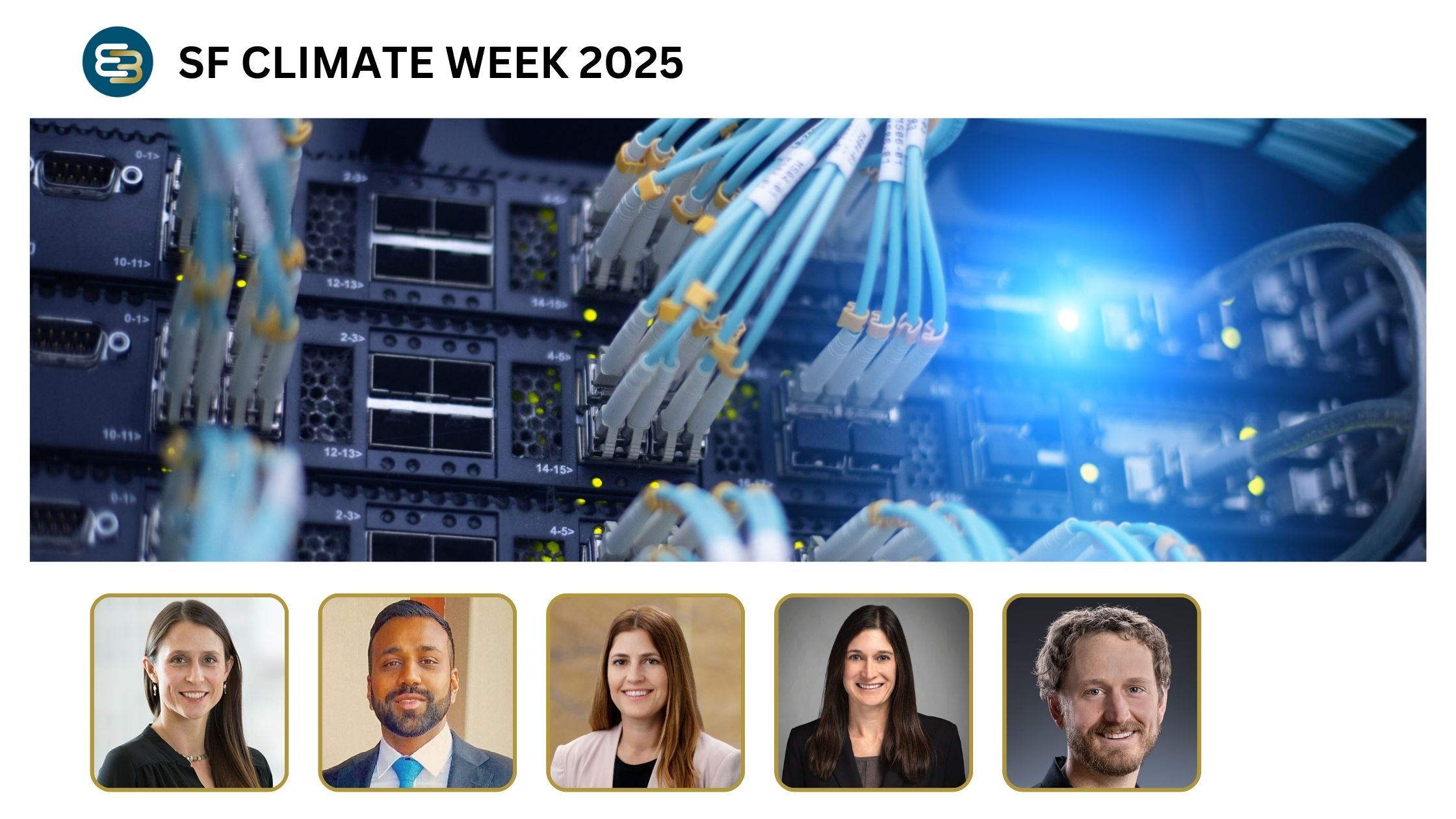
At San Francisco Climate Week 2025, E3 hosted a panel discussion at our headquarters in downtown SF on how artificial intelligence is reshaping electricity demand. The conversation brought together speakers from across the energy sector — electric utility, renewable and data center developers, and a ratepayer advocate — to talk through what this rapid load growth means for the grid, local communities, rates, and the climate.
Panelists:
- Gillian Clegg, Vice President of Energy Policy and Procurement, Pacific Gas & Electric
- David Fernandes, Head of Product Strategy, SoftBank Energy
- Skyler Holloway, Vice President of Portfolio and Strategy, Switch
- Elise Torres, Assistant Managing Attorney, TURN
- Moderated by Amber Mahone, Managing Partner at E3
The panel discussion focused on data center load growth: what happens when major new sources of demand emerge at the same time the grid is already under pressure from rapid clean energy deployment, legacy infrastructure, long interconnection timelines, and a politically uncertain federal context?
We’re in the middle of a rare convergence. Some projections of load growth from AI and other compute-intensive applications are staggering in scale, and uncertain in both shape and timing. Meanwhile, utilities are navigating how to balance reliability with decarbonization targets. New generation takes years to bring online. Transmission takes longer. And major shifts in federal incentives or trade policy could materially affect project economics.

Key themes from the panel:
- Demand is still climbing. Panelists broadly agreed that interest from developers is not slowing down. PG&E alone has seen 5.5 GW of requests that want to come online in the next decade. Data center siting decisions are happening in California despite high rates. And while some of this demand may be speculative, planners can’t assume the trend is short-lived.
- Uncertainty is a constant. This applies to both sides of the meter. On the developer side, some companies that once assumed they needed uninterrupted power at all times are now reevaluating what their operations actually require. Utilities, meanwhile, are weighing long-term procurement decisions in a volatile environment.
- Speed is the defining constraint. A recurring point was the mismatch between the speed of new demand and how slowly new infrastructure can be built. As Amber put it, “we have a 140-year-old regulated industry, and then we’ve got the fastest-moving, most transformative industry of our lifetime, colliding.” With generation build-out timelines, even for non-renewables, often taking a year or five (far slower than data centers would prefer), the near-term effect of new load may mean running existing gas plants more.
- The shape of demand matters. While data center loads were once assumed to be relatively flat and inflexible, that may be changing. Some companies are now combining more flexible AI training workloads with less flexible cloud or campus computing, creating some opportunities for peak load shifting.
- Local impacts and benefits vary. Panelists noted that, in theory, large new loads could lower average rates by spreading fixed costs over more kilowatt-hours. But this depends on how infrastructure is funded and what kind of long-term commitments data centers are willing to make. In areas with active or planned data center development, some communities have raised concerns about local impacts, like water and land use.
- Policy tools are still evolving. There was interest in statewide or ISO-wide rates that could provide a more consistent framework for large new loads, rather than negotiating every term from scratch. There was also strong support for improving the alignment between siting decisions, utility planning, and resource adequacy.
- Collaboration is essential. Panelists emphasized the importance of early and ongoing coordination between utilities, data centers, communities, and ratepayers to better align infrastructure needs, permitting timelines, and rate structures.

At E3, we sometimes compare the electric grid to a shared swimming pool. Utilities build and maintain the pool for a lot of little, medium, and big fish. But data centers, which might be the size of an entire power plant, are more like whales than guppies. Their size raises real questions about whether they should continue to swim in the shared pool, or bring their own power, locate behind the meter, or directly interconnect with generation. It also raises broader questions about the evolving role of utilities in serving this kind of load.
For more on our recent work on data centers, please find E3’s detailed, PJM-wide assessment on behalf of the Virginia Assembly’s Joint Legislative Audit and Review Committee (JLARC) here (by some estimates, 70% of global internet traffic flows through that region). You can also find our white paper on the topic here, where we seek to ground the conversation in historical context and illustrate the range of potential demand and supply outcomes. Reach out to kushal.patel@ethree.com for questions about this work.
Find a recording of the full panel discussion below.



